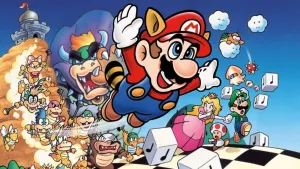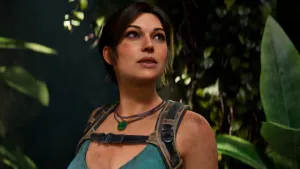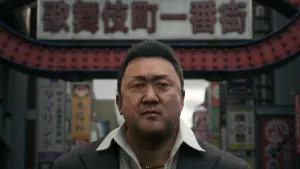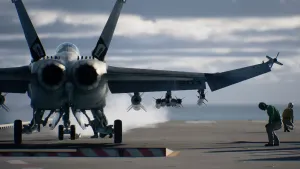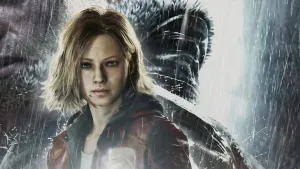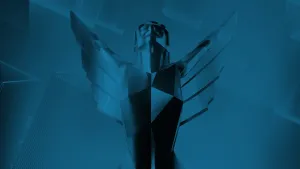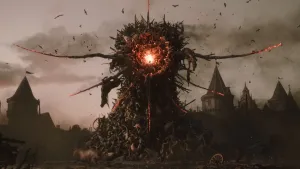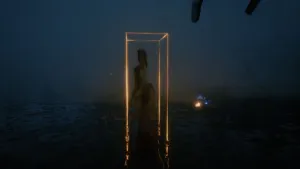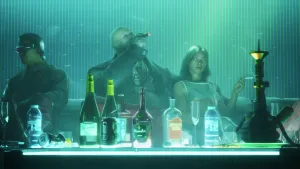Demon’s Souls Director Discusses Difficulty, Sequels, And More

Though I went into Demon’s Souls slightly terrified by the stories I’d heard of its intense difficulty, I ended up loving it (just read my review to see how much). Impressed by how the game came together but a bit confused as to why I enjoyed it so much in spite (or perhaps because of) the challenge, I decided to get a behind-the-scenes perspective from the game’s creators.
Demon’s Souls director Hidetaka Miyazaki turned out to be just the man to answer my questions about why they made the game so hard, how it's connected to King’s Field series, and even some tips on how to pass the most difficult levels. Check out the full interview below.
Game Informer: Demon's Souls has received a lot of hype for being one of the hardest games released this generation. I don't necessarily think that's the most notable aspect of the game, but it's what a lot of people seem to be talking about. When you started developing the game, did you set out to create something that focused on difficulty?
Hidetaka Miyazaki: Having the game be "difficult" was never the goal. What we set out to do was strictly to provide a sense of accomplishment. We understood that “difficulty” is just one way to offer an intense sense of accomplishment through forming strategies, overcoming obstacles, and discovering new things. Our goal of a sense of accomplishment was the basis of the game since the early stages of development, and we never strayed from that.
GI: What was the reasoning behind allowing players to lose souls if they die twice before reaching their blood stain? Personally, I never got hung up on this part of the game, but it seems to be the thing that pops up over and over again on forums. Everybody shares that same experience of frustration the first time they lose a large chunk of souls. If there's anything that would really scare people about the game, I think that might be it.
HM: The nature of the blood stain as you’ve described it was discussed a number of times during development. We do understand the frustration that players have experienced, but the main reason we settled on this system is that if the Souls could be recovered anytime, there would be no suspense or sense of accomplishment. [We want players to feel] like, “I can’t die until I get all those souls back,” or “I did it! I made it to my bloodstain!”
This ties back into my previous answer, but the element of failure, the fact that you can lose lots of souls when you die, was necessary to give players that sense of accomplishment.
GI: The rumor that I keep hearing is that Demon's Souls began as a next-gen King's Field project. Is this true? If so, how far along into development did you decide that Demon's Souls was its own thing and deserved a new title? Will you ever revisit the King's Field series?
HM: Demon’s Souls was not developed as a sequel to King’s Field. King’s Field definitely influenced the ideas behind Demon’s Souls, but we envisioned this as a completely original title, separate from King’s Field. As for a sequel to King’s Field, I’m sorry, but I can’t really give a clear answer whether there will be one in the future.
GI: What really impressed me about Demon's Souls was the brilliant level design. Every location felt very real and very alive...or very dead, rather. What was the process for coming up with each "world," and how long did it take to develop each one into separate zones and finally into something playable?
HM: Counting from the earliest stage of development, materializing the visions I had in my mind for each world, it took a little over two years to create. After I had firm visions of the settings inside my head, I’d say it took about a year to go from the detailed artwork and level design work to the final product.
GI: Not including the Nexus, there are a total of five worlds in the game. How many "leftover" or abandoned world ideas did you have at the end?
HM: I had a lot of ideas during the early design stage. The world ideas that came the closest to making it into the final product were the Library stage and the Outside area around the Nexus.
GI: There's a lot of variety in the bosses, with some battles like Old Hero or Flamelurker requiring serious, intense combat skills, while others like Dragon God are more like big puzzles that you need to figure out. How did you decide the balance for that?
HM: When designing the bosses, I made sure that they would be varied and exciting. I prepared different gameplay and strategies for each one so that players didn’t get tired of the same fight every time. We wanted to surprise players and encourage them to figure out different tactics, to think on their feet.
Each boss has a concept that can be described very simply. The Maneater, for instance, can be summed up by saying “there’s another enemy.”

GI: One of my favorite bosses in the game is the Adjudicator (pictured above) simply because I think he's a really bizarre creation. He's this big fat guy that has a huge meat cleaver and a giant tongue he can grab you with. And then to top it all off, his real "weak spot" is a bird resting on top of his head. What exactly is this guy? Where did the idea come from?
HM: The Adjudicator is my favorite character, too, to the point that I even created a special item (the Adjudicator Shield) just for him. This may come as a surprise, but the Adjudicator was one of the bosses that I had the least trouble coming up with an image for. Since the Shrine of Storms area was defined as “a shrine of the dead, praising a hero of a pagan religion,” I imagined a demon that “adjudicates the dead” for the first boss.
Since he’s a pagan god, I wanted him to have an unusual and chaotic feel. By mixing a couple of images of primitive gods together, I thought maybe we could create a very raw concept, and from that came the Adjudicator as he looks in the game.
GI: There are two extremely difficult areas in the game that I just need to ask about, two zones where I really struggled. First off, there's 5-2, the swamp area in the Valley of Defilement. In this level you need to move through a swamp that slows your movement, makes you unable to roll, and frequently poisons you. In addition to that, the powerful enemies in the area move at full speed. This was really tough! Why did you decide to make this area so hard? Are there any tricks to getting past it more smoothly?
HM: Rather than calling them difficult, it’s more appropriate to say there are two areas that were meant as “places of evil intent.” The first one is the Tower of Latria (man-made evil) and the second is the Valley of Defilement (natural evil). The difficulty level of Valley of Defilement 2 was born from this idea. We made it a swamp that no one would even want to set foot in. It’s one of my personal favorite (and most hated) areas, so I might’ve overdone it! (laughs)
By way of apology, here’s a few pointers: use the pockets of land as much as possible, and if you can’t reach those, then don’t try to use your roll move. By abandoning the roll maneuver, you have more equipment options. Since you’ve come this far, you might’ve found some equipment that raises your poison resistance. Use that together with high-defense armor, as heavy as you can carry, and you might be able to get through somehow....
That’s how I cleared it, anyway, but thinking back on it, I remember that I had a lot of trouble clearing this area. So that might not be the best method after all....
GI: The second difficult part I wanted to address are the dragons in world 1, especially the one that attacks in 1-4. I was able to kill the dragon in 1-2 and it felt great, but the second dragon caused me so many problems and made me almost give up the game entirely. You're able to actually run right past these creatures if you can pull off the timing, but it's also possible to find safe spots in the environment and attack them with spells or arrows to very slowly drain their health. Did you intend for most players to defeat the dragons in the course of going through World 1 or did you expect that most players would just run right by?
HM: The most common way to get through is to search for pockets of safety and ultimately just run through. Boletarian Castle 4 is the very last area to conquer, so that dragon was meant to be the final obstacle before reaching the last boss. We wanted the dragons that you encounter at the beginning of the game in Boletarian Castle 1 to be the final obstacles to overcome after your long journey. As a result, the difficulty ended up getting pushed pretty high....
GI: Would you be interested in creating a sequel to Demon's Souls? I've already seen people on the forums really excited about the possibility of a new game in the same style with new worlds to explore. Do you think this is possible or likely?
HM: I’m just an employee of the development company, so I can’t directly answer whether there’ll be a sequel to Demon’s Souls. With that said, my personal opinion is that we learned a lot during the development of Demon’s Souls, and there were a lot of things that we couldn’t do the first time, so I’d welcome the chance to create an even better game in the same style if the opportunity arises.

Get the Game Informer Print Edition!
Explore your favorite games in premium print format, delivered to your door.
- 10 issues per year
- Only $4.80 per issue
- Full digital magazine archive access
- Since 1991
